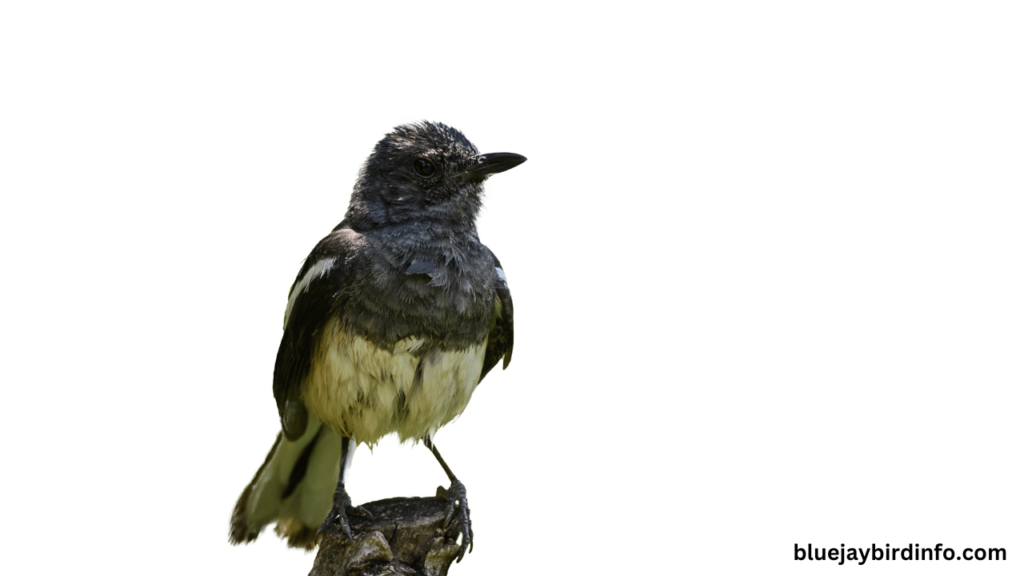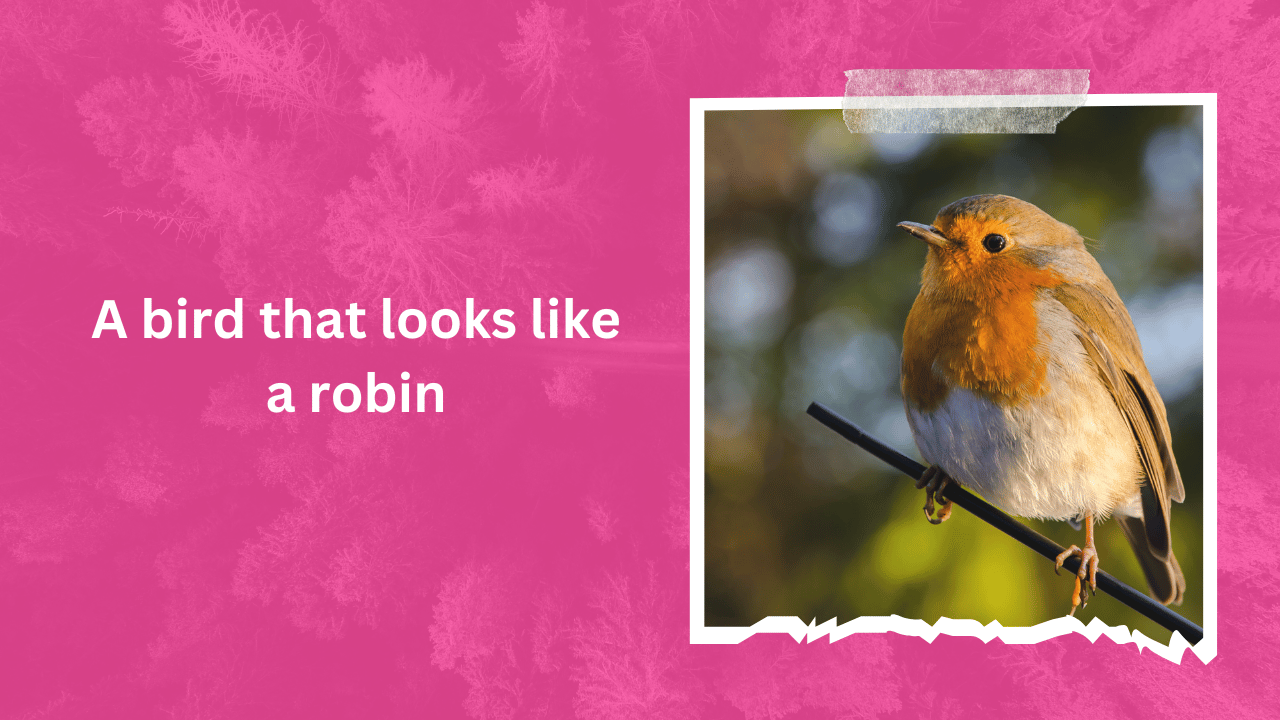We all know the classic Robin: a cheerful songbird with a vibrant red breast, a constant presence in our backyards and local parks.
But the avian world can be surprisingly deceptive! Sometimes, a feathered friend perched on a branch might not be a Robin at all, but a close imposter sporting a similar look.
These Robin look-alikes can cause confusion for even seasoned birdwatchers. They share some physical characteristics with Robins, leading to mistaken identifications. But understanding these similar species goes beyond just curiosity.
By learning the key differences between Robins and their doppelgangers, we can unravel the secrets of their unique behaviors, habitats, and ecological roles.
So, the next time you see a bird with a reddish chest, don’t jump to conclusions! This blog post will be your guide to the fascinating world of Robin look-alikes.
We’ll delve into their appearance, habitat preferences, and even their songs, equipping you with the knowledge to confidently identify these feathered friends in your backyard. Buckle up, birders, and get ready to discover the hidden diversity lurking right outside your window!
Contents
- 1 Common Look-Alikes
- 2 Similar Species
- 3 Habitat and Range
- 4 Behavior and Diet
- 5 Identification Tips
- 6 Conclusion
- 7 FAQ’s
- 7.0.1 Are European Robins and American Robins closely related?
- 7.0.2 Can Eastern Bluebirds and Robins interbreed?
- 7.0.3 What is the main difference between a Robin and a Northern Mockingbird?
- 7.0.4 Why do Cedar Waxwings have waxy tips on their wings?
- 7.0.5 Where can I find more information about bird identification?
- 7.0.6 How can I attract more birds to my backyard?
Common Look-Alikes
American Robin: The classic Robin we often see in North America, the American Robin is characterized by its reddish-orange breast, dark head, and white eye ring. They are known for their melodious songs and their habit of foraging for worms on lawns.
European Robin: While sharing a similar name, the European Robin is quite different from its American counterpart. It is smaller, with a bright orange-red breast that extends up to its head and a dark back.
Similar Species
Eastern Bluebird: This vibrant bird is often mistaken for a Robin due to its rusty-orange breast. However, its bright blue upperparts and smaller size distinguish it from Robins.
Northern Mockingbird: With its gray plumage and a white patch under its wings, the Northern Mockingbird can sometimes be confused with a Robin. However, its larger size and distinctive song set it apart.
Cedar Waxwing: Though not as common as the other birds mentioned, Cedar Waxwings can be mistaken for Robins due to their reddish-brown underparts. However, their distinctive crest and waxy red tips on their wing feathers make them easy to identify.
Habitat and Range
Habitat Preferences: Both American Robins and European Robins prefer a variety of habitats, including forests, woodlands, and urban areas. They can be found in parks, gardens, and even in city centers.
Eastern Bluebirds, on the other hand, prefer open areas with scattered trees and shrubs. Northern Mockingbirds are adaptable and can be found in a wide range of habitats, including forests, woodlands, and urban areas.
Cedar Waxwings are often found in flocks, foraging for berries and insects in trees and shrubs.
Geographic Distribution: American Robins are found throughout North America, while European Robins are primarily found in Europe and parts of Asia. Eastern Bluebirds are mainly found in eastern North America, while Northern Mockingbirds are widely distributed across North America.
Cedar Waxwings have a more widespread distribution, ranging from Canada to Mexico.
Behavior and Diet
Feeding Habits: American Robins are primarily insectivores, feeding on worms, insects, and berries. European Robins have a similar diet, but they may also consume seeds.
Eastern Bluebirds are also insectivores, while Northern Mockingbirds are omnivores, feeding on insects, fruits, and seeds. Cedar Waxwings primarily feed on fruits and insects.
Mating and Breeding: Both American and European Robins build cup-shaped nests in trees or shrubs.
They lay a clutch of eggs and incubate them until they hatch. Both parents care for the young. Eastern Bluebirds, Northern Mockingbirds, and Cedar Waxwings also build cup-shaped nests and exhibit similar breeding behaviors.
Vocalizations: American Robins are known for their melodious songs, while European Robins have a more varied vocal repertoire. Eastern Bluebirds have a clear, whistled song, and Northern Mockingbirds are renowned for their ability to mimic other bird species. Cedar Waxwings have a soft, high-pitched call.
Identification Tips

To accurately identify these bird species, it’s important to pay attention to key field marks. These include size, plumage color, beak shape, and behavior. Using binoculars and a field guide can help you observe these details more closely.
Citizen science projects can also help you learn more about bird identification and contribute to conservation efforts. By participating in bird surveys and reporting your observations, you can help scientists track bird populations and understand their behavior.
Conclusion
While American Robins and their look-alikes may share some similarities in appearance, understanding their unique characteristics can help you identify them accurately.
By paying attention to details like plumage color, beak shape, and behavior, you can appreciate the diversity of bird species in your local area.
Remember, birdwatching is not just about identifying birds; it’s also about connecting with nature and appreciating the beauty of the natural world. By understanding the different species that inhabit our planet, we can better appreciate their ecological importance and take steps to protect them.
FAQ’s
While they share a common name and similar appearance, American and European Robins are not closely related. They belong to different families and have distinct evolutionary histories.
Can Eastern Bluebirds and Robins interbreed?
No, Eastern Bluebirds and Robins belong to different bird families and cannot interbreed. They have distinct physical and behavioral characteristics.
What is the main difference between a Robin and a Northern Mockingbird?
While both birds can have reddish-brown plumage, Northern Mockingbirds are generally larger and have a more slender build. Additionally, Northern Mockingbirds are known for their impressive mimicry skills.
Why do Cedar Waxwings have waxy tips on their wings?
The waxy tips on the wings of Cedar Waxwings are a result of a diet rich in berries. These waxy substances help to protect their feathers from wear and tear.
Where can I find more information about bird identification?
You can find detailed information about bird identification in field guides, birdwatching websites, and mobile apps. Local bird clubs and nature centers can also provide valuable resources.
How can I attract more birds to my backyard?
To attract more birds to your backyard, you can provide food sources like bird feeders and bird baths. Planting native plants that produce berries and insects can also attract a variety of bird species.








